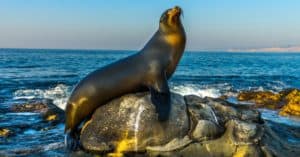The number of migrating salmon entering some freshwater rivers from the Pacific Ocean is dwindling. Are predatory animals causing this? Can we blame sea lions? Are they eating all of the migrating salmon?
Are Sea Lions Eating All the Migrating Salmon?
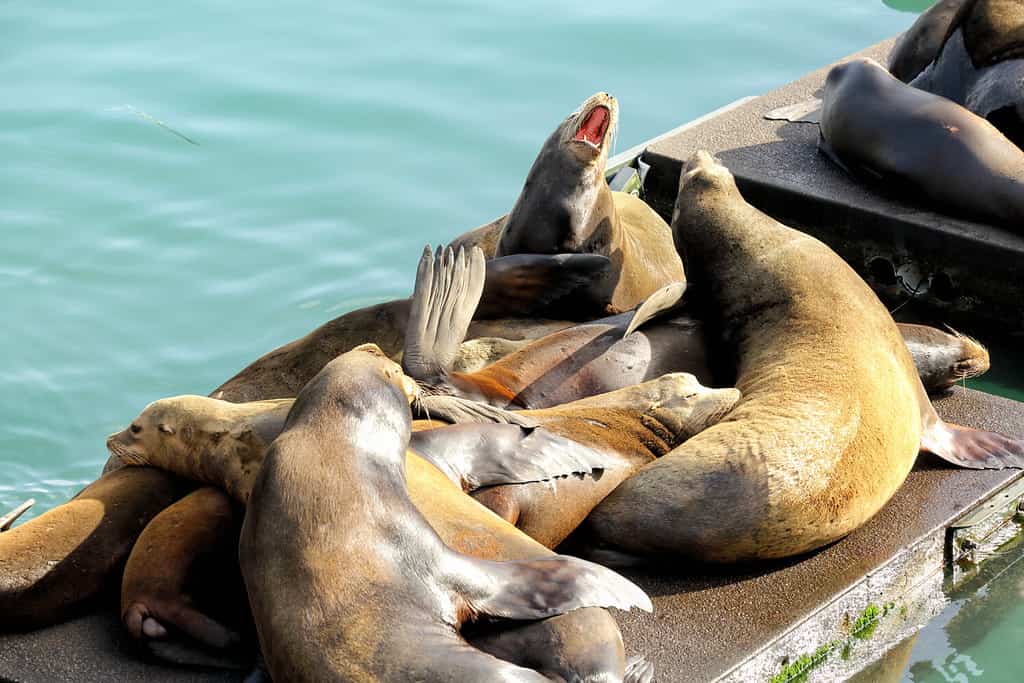
Sea lions are hurting migrating salmon populations in certain river systems.
©B Brown/Shutterstock.com
Yes, sea lions are eating enough migrating salmon that it is a problem for already stressed salmon species in some places. They have figured out that salmon bottleneck into certain river systems, and that salmon populations become especially dense around dams with fish ladders.
Within the Columbia River Basin in Oregon, Washington, and Idaho, sea lions eat more than 10 thousand salmon per year. Up to 44 percent of arriving salmon at any given time become sea lion food.
While the rivers near Portland and Seattle are the best studied, more river systems along the Pacific Coast are affected. This includes Washington, Oregon, and California.
Also, tributaries are affected by either the presence of sea lions or the effects of their predation. This includes systems in California, Oregon, Washington, Idaho, Montana, and Canada.
Are Sea Lions Being Removed From Waterways With Migrating Salmon?
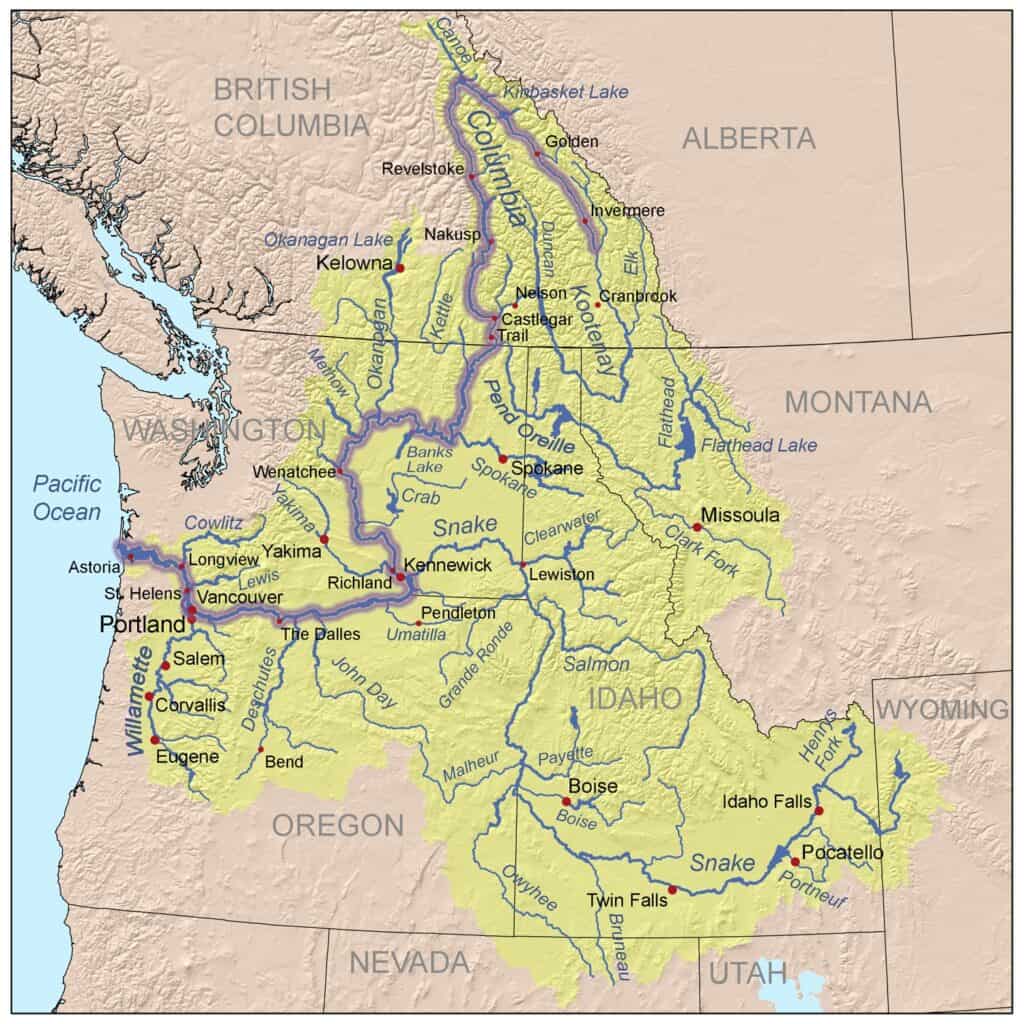
Sea lions are damaging the number of migrating fish throughout the Columbia River system.
Yes, sea lions are being removed from some waterways used by migrating salmon. The watersheds that sea lion hunting is taking place in are not historically natural habitats for the sea lions present. However, more than 2000 sea lions now know that some river systems can be used as a migratory feeding ground.
Near Portland, Oregon, sea lions found between the Interstate 205 bridge and McNary Dam about 190 miles east can legally be removed. Any of the tributaries along this stretch of the Columbia River are also open to sea lion removal. Indigenous tribes and state officials have received licenses to remove over 600 sea lions from these waters over 5 years.
In the affected Columbia River and Willamette River systems, the sea lions targeted for removal do not affect sea lion population sustainability. Less than one-fifth of a percent of the total sea lion population is destroyed through riverine management efforts. The affected species earmarked for removal are California sea lions (Zalophus californianus) and steller sea lions (Eumetopias jubatus).
Are Sea Lions Endangered?
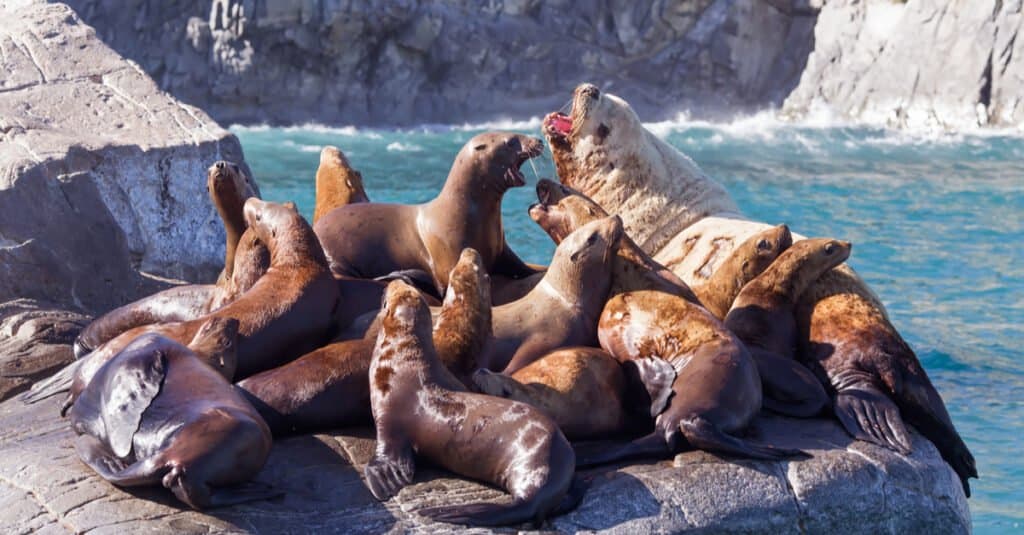
California sea lions and steller sea lions are not endangered.
©Alexander Machulskiy/Shutterstock.com
No, the sea lions along the Pacific Coast that are being removed are not endangered. Also, the sea lions being removed are not killed in quantities that affect the ongoing population densities of the animal species in question.
California sea lions were dwindling in numbers before they were afforded protection in 1972. Since then, their population has rebounded. They are no longer considered threatened and are listed as an animal of Least Concern by the International Union for Conservation of Nature (IUCN).
In 1972, the California sea lion population was less than 75 thousand individuals. Today, there are an estimated 300 thousand individuals along the Pacific Coast between Alaska and Mexico. They are currently at their Optimum Sustainable Population which means that if they continue to grow in numbers, they will become a detriment to their ecosystems.
In the areas where monitoring of endangered salmon runs is happening, only male California sea lions are present. That’s because the breeding females remain in California and wait for the males to migrate to their areas.
Steller sea lions used to be a threatened species, but they too have since rebounded under the protections allotted to them in 1972. Originally, a little more than 18 thousand animals existed in the 1970s. This has since grown to almost 72 thousand animals today.
Which Migrating Salmon Are Most Affected by Sea Lion Predation?

Chinook salmon are one of the hardest-hit salmon populations in certain areas.
©Evan Linnell/Shutterstock.com
Chinook salmon (Oncorhynchus tshawytscha) numbers are deeply affected by predating sea lions. In the Lower Columbia River, over 30 percent of the Chinook salmon in late-season runs are eaten by sea lions. Early season runs don’t fare much better with about a 20 percent loss in Chinook salmon populations in the region.
Sockeye salmon (Oncorhynchus nerka) along the Fraser River in British Columbia, Canada, are in trouble. Sea lions hanging out on northern Vancouver Island are known to lurk in the Fraser River for a few weeks during the peak of the salmon run.
This list is not comprehensive, and all salmon runs in colder Pacific waters along North America’s coast are under threat from overpredation by sea lions. Compounded by human impediments like dams and locks, the salmon population along the Pacific Coast needs immediate help.
What Other Migrating Fish Do Sea Lions Eat?
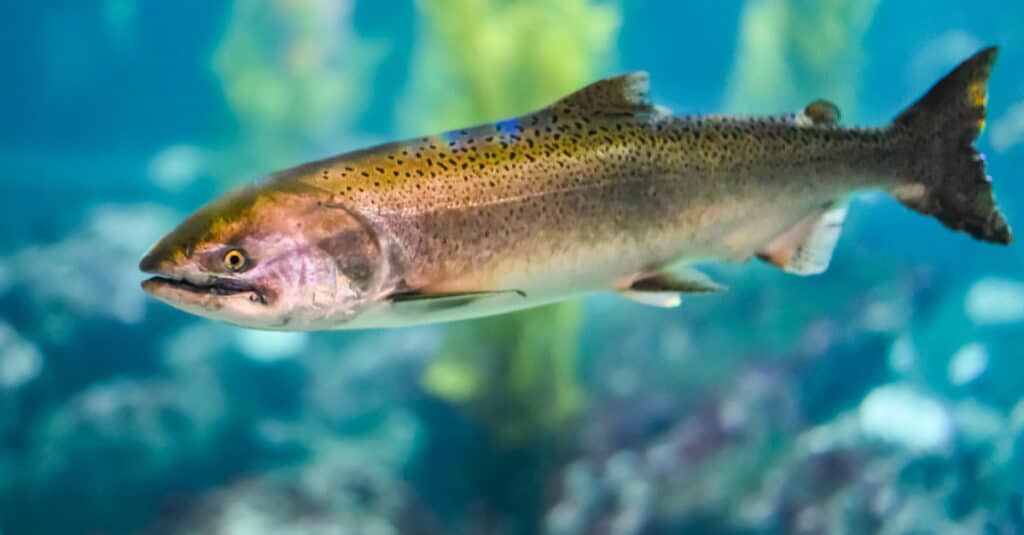
Steelhead trout are also a targeted prey fish by sea lions.
©David A Litman/Shutterstock.com
Sea lions are also eating a damaging amount of steelhead trout. Before the sanctioned hunting of sea lions in Oregon, about 25 percent of the steelhead running the Willamette River became sea lion prey. Their numbers have started to recover since the initiation of sea lion removal programs.
In the 1980s, a small number of California sea lions managed to kill off the steelhead population native to Lake Washington. This occurred because of a small population of animals at the Ballard Locks in Seattle. Today’s sea lion removal efforts are taking place to avoid a repeat of this extinction event in other locations.
According to scientists, one wave of migrating steelheads early in the season in the Willamette has a 90 percent chance of going extinct if sea lions are not removed. If the sea lions were not threatening this specific run of fish, their risk of extinction would drop to about 5 percent.
Lamprey, white sturgeon, and eulachon are also affected by sea lion populations in certain riverine environments. Efforts to restore native salmon populations to healthy levels will also positively impact these species as well.
How Many Migrating Salmon Do Humans Eat?

Humans eat a sizeable portion of the wild fish population.
©CSNafzger/Shutterstock.com
Humans are responsible for eating about half of the total Pacific salmon population, though most of these salmon are not from the endangered species being decimated by sea lions. While this sounds like a lot, close management of fishermen through regulations keeps people from depleting fish stocks in the current ecological climate. To use an endangered trout population as an example, humans are responsible for consuming around 5 percent of all migrating steelhead trout in the Columbia River.
Most Pacific salmon consumed in the United States are wild-caught and not farmed. Currently, there are over 720 million wild Pacific salmon. Over 40 percent of these wild salmon are artificially stocked by fisheries along their river runs.
Because of restocking efforts, salmon runs as a whole are increasing in volume every year. It is individual populations in certain geographic areas that are at critical risk of losing their salmon stock.
While humans do eat the migrating salmon along the Pacific Coast, consumption is not what has impacted salmon the most. Urban sprawl, damming, and other impediments along the riverine systems that connect to the Pacific Ocean have done the most damage to migrating salmon populations.
The photo featured at the top of this post is © NatureDiver/Shutterstock.com
Thank you for reading! Have some feedback for us? Contact the AZ Animals editorial team.






